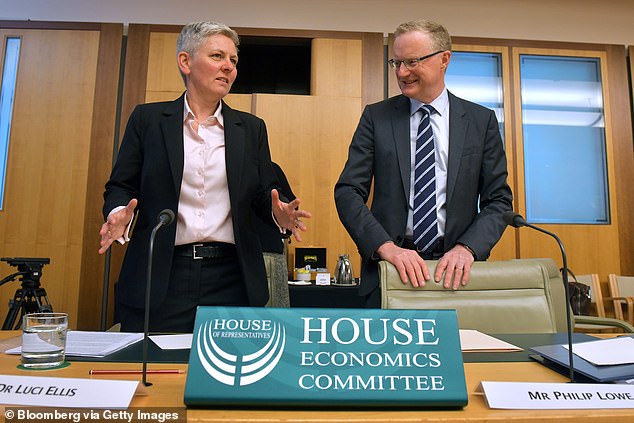Westpac delivers a major blow to millions of Australians with a mortgage
Westpac now expects the Reserve Bank to cut rates in May instead of February.
Chief economist Luci Ellis, a former assistant governor of the RBA, announced that aid would be delayed until after Easter on Thursday morning – a week after the NAB updated its forecasts.
“An earlier start in February or March is still possible, but not more likely than a May start date,” she says.
‘A later start date is also a risk scenario, if inflation does not fall as the RBA currently predicts, let alone our own marginally milder expectation.’
The 30-day interbank futures market does not expect the Reserve Bank to cut rates until June next year.
Dr. Ellis said the minutes of the Reserve Bank’s November meeting, released this week, suggested the RBA was more concerned about inflation rising again after the expiry of the $300 electricity rebates.
“This is almost certainly how the board and staff feel about the prospects,” she said. “It suggests they will wait longer than we previously thought.”
The minutes of the November meeting said the RBA would need to observe ‘more than one good inflation outcome on a quarterly basis to be confident that such a decline in inflation was sustainable’.
Westpac now expects the Reserve Bank to cut rates in May instead of February
Headline inflation fell to a three-year low of 2.8 percent in September, but the RBA expects the annual consumer price index to rise again to 3.7 percent by the end of 2025 after government energy rebates end.
Underlying inflation of 3.5 percent is still higher than the Reserve Bank’s target of 2 to 3 percent, and service sector inflation is even higher at 4.6 percent.
The Commonwealth Bank and ANZ still expect a rate cut in February, while NAB and now Westpac predict relief in May.
The big banks have changed their minds after RBA Governor Michele Bullock ruled out any relief in 2024.
This means Australian borrowers are missing out, even though rates have been cut this year in the US, UK, Canada, New Zealand and the European Union.
The Reserve Bank’s 13 hikes in 2022 and 2023 took the cash rate to a 12-year high of 4.35 percent.
The futures market now only expects interest rate cuts in June and December next year.
But Westpac expects four rate cuts in 2025, in quick succession from May, which would bring the cash rate back to 3.35 percent for the first time since March 2023.

Chief economist Luci Ellis, a former assistant governor of the RBA, announced that aid would be delayed until after Easter on Thursday morning – a week after the NAB updated its forecasts. She is pictured on the left with her former boss Philip Lowe
“Similar to the pattern in some peer economies, we expect the first steps to take place somewhat early, with successive cuts in late May and early July,” Dr Ellis said.
“This is also a change from our previous expectation of a moderate pace of decline of one cut per quarter.
‘We still expect the final interest rate to be 3.35% and to be reached by the end of 2025.’
Dr. Ellis, who served as the RBA’s de facto chief economist from 2016 to 2023, said the RBA may even be overestimating the dangers of high inflation.
“We are aware, however, that things can turn quite quickly, and that the RBA’s view on the economy appears a little more hawkish than we think is justified,” she said.
With employment growth slowing and economic growth at weak levels, she suggested that inflation could even fall below the RBA’s 2 to 3 percent target, as it did before and during the pandemic, if interest rates rise too long would remain high.
“The policy is restrictive, and if it were to remain at the same level for a longer period of time, sooner or later inflation would remain below target,” she said.
Treasurer Jim Chalmers said many Australians are still feeling the cost of living crunch, even as inflation has eased.
“We recognize that even with the remarkable progress made in national data, this does not always immediately translate into how people feel and perform in the economy,” he told reporters on Thursday.
‘We recognize that, we have been honest about that.’
Dr. Chalmers noted that Australian interest rates are still lower than most developed countries, but left out that Canada’s policy rate of 3.75 percent is 60 basis points lower than Australia’s spot rate of 4.35 percent.
“Even though rates in countries like the US, Britain and New Zealand are falling slightly, they are still higher than ours,” he said in a ministerial statement on Wednesday.
